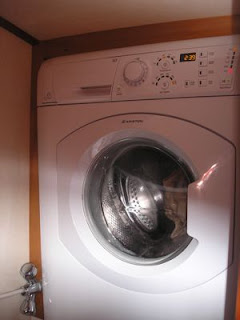This is a project, it is boat-related, and it qualifies as small, tho the effects are potentially huge. Here is a challenge issued by Livia aboard
s/v Estrellita 5.10b:
 Many of my non-boating friends are outdoors enthusiasts of some sort and most outdoors enthusiasts (I hope) make it a practice to pack out all of their own trash and a piece or two of someone else's. When hiking I would always grab other trash and pack it out (within reason), in part because I wanted to keep the forest clean, but also in part because I realize that it is surprisingly easy to litter on accident – things fall out of your pocket, or blow away, etc.
Many of my non-boating friends are outdoors enthusiasts of some sort and most outdoors enthusiasts (I hope) make it a practice to pack out all of their own trash and a piece or two of someone else's. When hiking I would always grab other trash and pack it out (within reason), in part because I wanted to keep the forest clean, but also in part because I realize that it is surprisingly easy to litter on accident – things fall out of your pocket, or blow away, etc.
Similarly I think there are two kinds of boaters: the kind that has littered on accident by losing a few things overboard…and those who lie ;)
On a boat, on an extended cruise, I’ve had more difficulty adopting my practice of packing out some communal trash. Reason #1: There is soooo much plastic trash lying around that I feel overwhelmed. Reason #2: Because we tend to stay remote as long as possible, we have to carry our trash around for a long period of time and stowing it becomes an issue.
I recently read in a BC magazine that they estimate that half of the plastic trash on BC’s beaches is industrial but half is from, yes, you guessed it, “recreational marine users”. Ahem. That’s *us* kids.
What I have decided to do is to commit to something simple, that we can manage aboard, but that hopefully covers at least our own accidental littering (if and when it happens despite our best efforts), if not covering some of the accumulation as well.
The Plastic Challenge: In every anchorage, if we go ashore, I pick up a single plastic item and carry it back to the boat to join our trash.
Simple, huh? Not that difficult to adopt, huh? So…I double dog dare you.
The picture above is my “Copeland Island Trash”.
OK folks, the challenge is yours to accept - you know you'll feel better when you do.












































